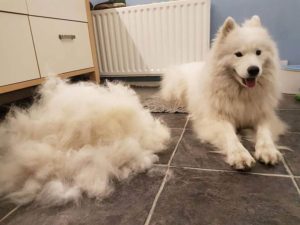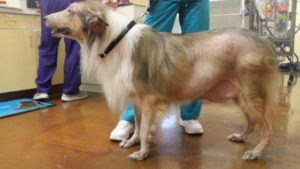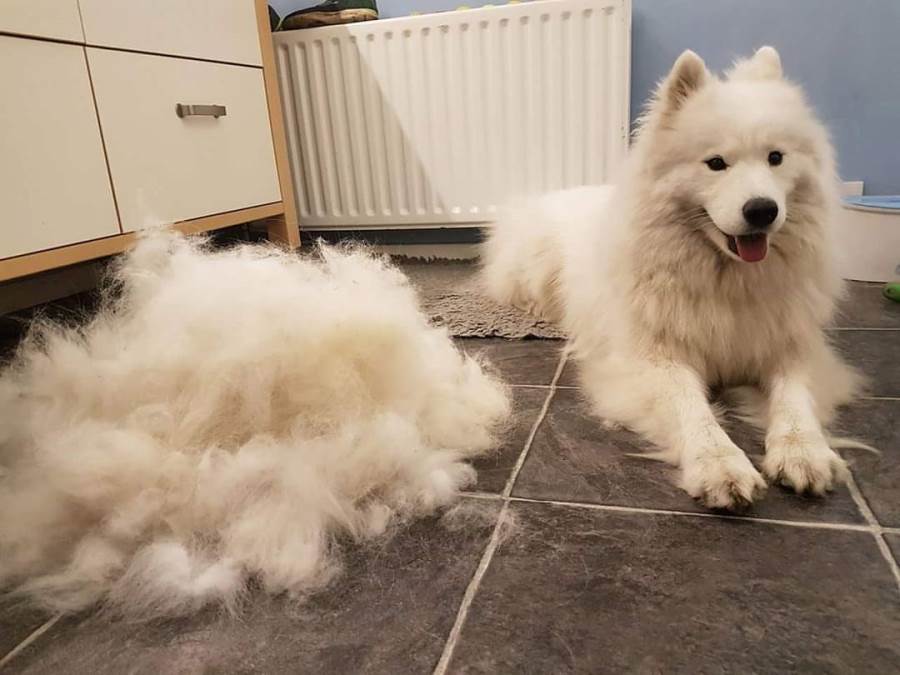
Dog shedding is a common occurrence that nearly every dog owner has to deal with. While it may be frustrating to find fur all over your home, shedding is a natural and essential part of a healthy dog’s life. The good news is that there are steps you can take to reduce shedding and keep your dog comfortable while maintaining a fur-free home.
In this comprehensive guide, we will explore the reasons why dogs shed, when the peak shedding season occurs, how long dogs shed, and whether all dogs shed. We will also provide five practical tips to help you manage seasonal shedding effectively. By implementing these tips, you can minimize the amount of loose fur around your home and create a more pleasant environment for both you and your furry friend.
Why Do Dogs Shed?
Dog shedding occurs because dogs have fur. Shedding is a natural part of the hair’s growth cycle, which includes the anagen, catagen, telogen, and exogen phases. During the anagen phase, new hair grows. The catagen phase is when the hair reaches its maximum length and stops growing. The telogen phase is a resting period where the hair neither grows nor falls out. Finally, during the exogen phase, the hair falls out or sheds. This shedding process allows dogs to get rid of old and damaged hair, making way for healthier new hair12.
The extent of shedding can vary from breed to breed. Some dogs, like Poodles, have hair that stays in the anagen phase for longer periods, similar to human hair. Other dogs, such as Huskies, may shed more during specific seasons, like warmer months. Shedding can be influenced by various factors, including the environment, hormones, breed, age, and overall health of the dog23.
When is the Peak Dog Shedding Season?
Typically, the peak shedding seasons for dogs occur in the fall and spring. However, some dogs may shed throughout the year, making it less noticeable. Dogs with double coats, which consist of an outer coat of long, stiff hairs and an undercoat of soft hairs, are more likely to shed large amounts of fur seasonally. These dogs shed their lighter summer undercoat when it gets colder and their thick winter undercoat when it gets hotter1.
How Long Do Dogs Shed?
The duration of shedding can vary depending on the dog and its living conditions. Seasonal shedders who spend most of their time outdoors can be expected to shed their winter coat from March to June and their summer coat from September to November. However, indoor dogs may experience disrupted shedding cycles, and some seasonal shedders who spend most of their time indoors may shed throughout the year1.
Do All Dogs Shed?
While most dogs shed to some extent, the amount of shedding can vary greatly depending on the breed. If you are looking for a dog that doesn’t shed much, you need to be selective when adopting. Breeds like Afghan Hounds and American Hairless Terriers are known for being low shedders. However, it is important to note that even these breeds may still lose some hair occasionally13.
Tips to Control Seasonal Dog Shedding

While you cannot completely prevent your dog from shedding, there are steps you can take to manage and reduce shedding. By following these tips, you can minimize the amount of loose fur in your home and keep your dog comfortable.
1. Regular Brushing
Regular brushing is essential to controlling shedding. Brushing your dog helps to remove loose fur before it ends up on your furniture and floors. The Texas A&M School of Veterinary Medicine & Biomedical Sciences recommends brushing your dog for five to ten minutes three to four times a week4. Regular brushing not only helps to remove loose fur, but it also stimulates the skin and promotes a healthy coat.
When brushing your dog, it is important to use the right type of brush for their coat. Different brushes are designed for different coat types. For example, wire-pin brushes are suitable for curly-haired dogs, while rubber curry combs or stiff bristle brushes may be more effective for short-haired dogs. Dogs with double coats may benefit from a de-shedder brush specifically designed for undercoats4.
2. Bathing Your Dog

Regular bathing can help to remove loose fur and keep your dog’s coat healthy. Bathing your dog also helps to remove any allergens or irritants that may be causing excessive shedding. During shedding season, you should consider bathing your dog more frequently to help remove loose fur before it ends up on your furniture and carpets4.
When bathing your dog, it is important to use a shampoo that is specifically formulated for dogs. Look for a shampoo with natural ingredients that promote skin health. Avoid shampoos that contain harsh chemicals or artificial colors and scents, as these can irritate your dog’s skin4.
3. Visit Your Veterinarian Regularly
Regular veterinary check-ups are important for maintaining your dog’s overall health. If you notice that your dog is shedding excessively, it may be a sign of an underlying health issue. Dogs can experience hair loss due to stress, allergies, skin conditions, or more serious illnesses like thyroid disorders4.
Visiting your veterinarian will allow them to assess your dog’s health and determine if there are any underlying issues contributing to excessive shedding. They may recommend additional treatments or suggest changes to your dog’s diet or grooming routine. Regular check-ups will help ensure that your dog is healthy and that any shedding concerns are addressed promptly4.
4. Consider Dog Food or Supplements
In some cases, dietary changes or supplements may help to reduce shedding in dogs. Omega-3 fatty acids, for example, can improve skin and coat health, reducing excessive shedding caused by allergies or an unbalanced diet5. However, it is important to consult with your veterinarian before making any changes to your dog’s diet or introducing supplements. They can provide guidance on the best approach for your dog’s specific needs5.
5. Maintain a Clean Living Environment

Keeping your home clean and free from excess fur can help to manage shedding. Regularly vacuuming your floors, furniture, and curtains can help to remove loose fur. Using washable covers on your furniture can also make it easier to clean up any fur that does accumulate.
In addition to regular cleaning, consider using a lint roller or pet hair remover to quickly remove fur from clothing or upholstery. Keeping your dog’s bedding clean and regularly washing their toys can also help to reduce the amount of loose fur in your home5.
Conclusion
While shedding is a natural part of a dog’s life, it can be managed and minimized with proper care and maintenance. Regular brushing, bathing, and visits to the veterinarian are essential for keeping your dog’s coat healthy and reducing excessive shedding. Additionally, considering dietary changes or supplements may help to improve skin and coat health, further reducing shedding. By implementing these tips and maintaining a clean living environment, you can enjoy a fur-free home while providing the best care for your beloved canine companion.
Remember, shedding is a normal process, and it is important to be patient and understanding. By following these tips, you can create a more comfortable and enjoyable environment for both you and your furry friend.
Progressive has your back
Investing in pet insurance is a great way to protect your dog from conditions that can cause excessive shedding. At Progressive, through our friends at Pets Best, you can customize dog insurance plans to suit your pet’s unique needs. In addition, Pets Best policyholders can access a 24/7 Pet Helpline, giving you peace of mind and expert advice when it comes to managing your dog’s shedding and overall health1.
Was this article helpful?
Sources:
